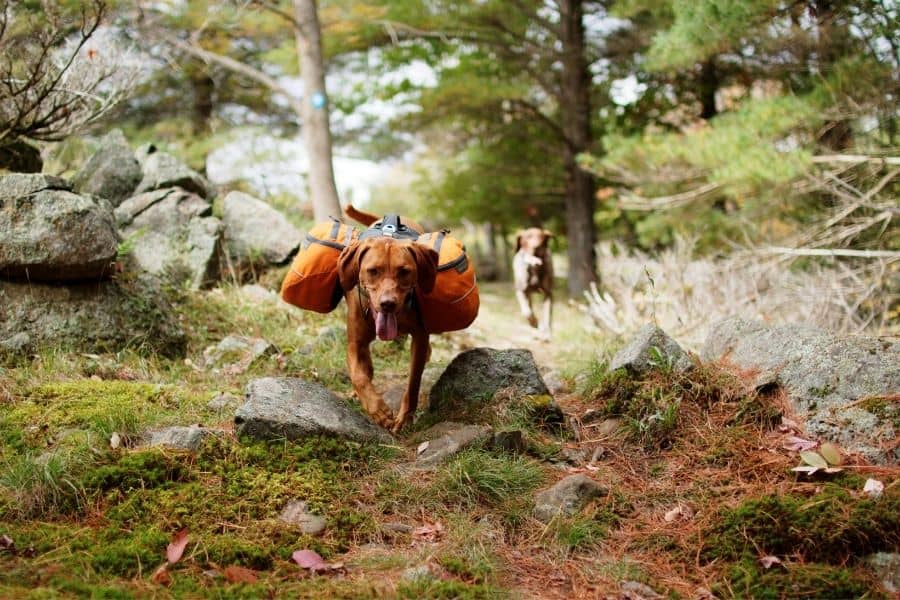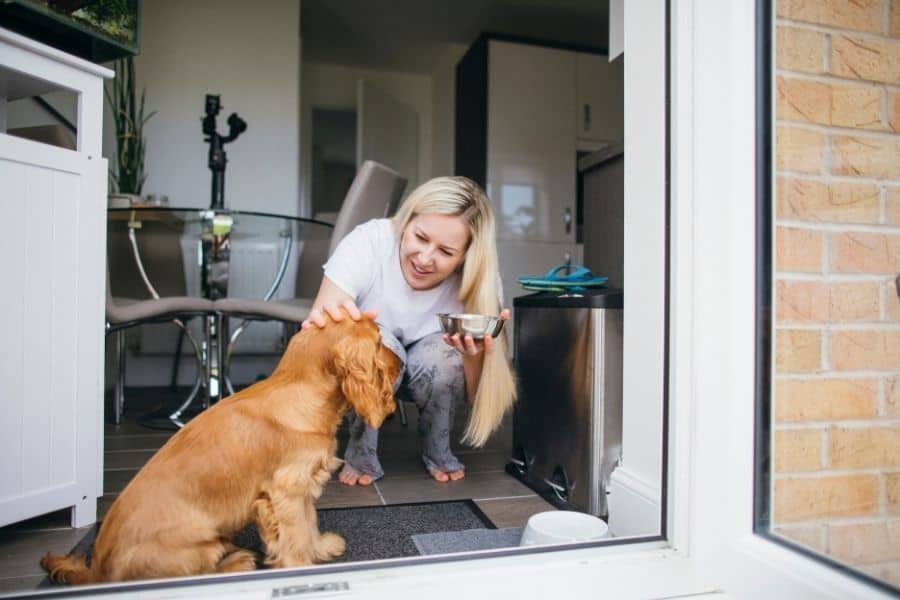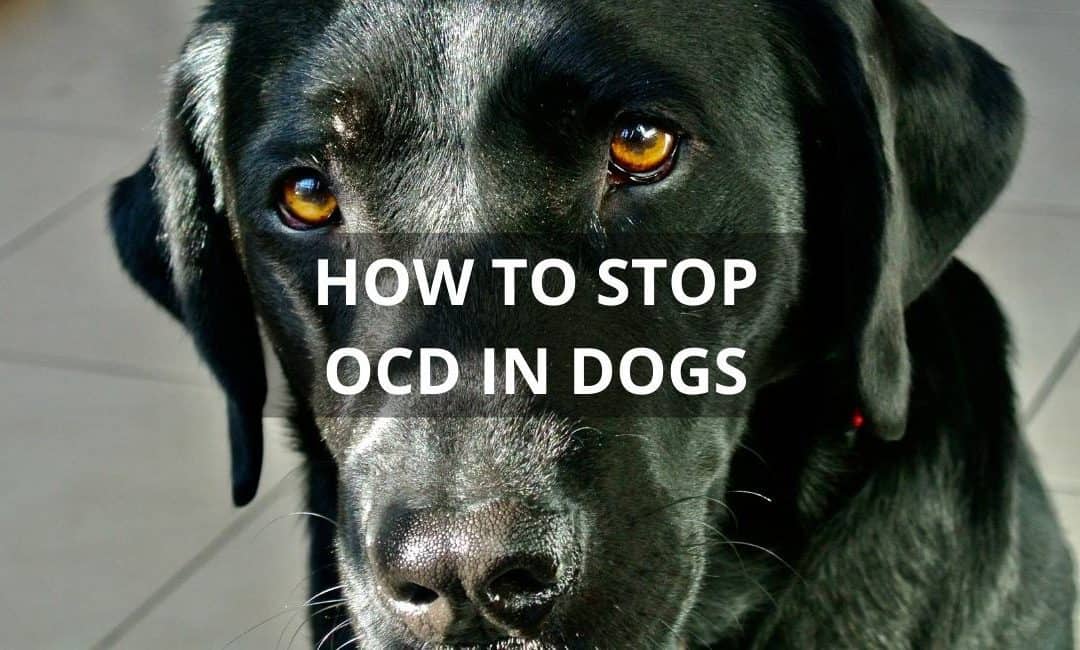OCD behavior in dogs is stressful on all involved – the dog with OCD and the family living with it.
If you have a dog with OCD, or even a dog just developing OCD tendencies, first and foremost in your mind is : how do we stop this behavior?
The good news is, there are training and management approaches to reducing canine OCD.
The caveat is, these plans tend to be highly tailored to the individual dog. This is because there is such a range of causes, triggers, and contributing factors to OCD, as well as expressions of the compulsive behavior itself.
Any plan to address it necessarily needs to take into account many factors about the dog, its situation, history, personality, and more.
This is where a good dog trainer, canine behavior consultant, or experienced veterinary behaviorist can come in. A professional who understands working with compulsive behavior in dogs can save you much time and frustration.
That said, there are some foundation recommendations for almost any OCD dog. Let’s start with the most basic then move on from there.
Recommended for all OCD dogs
The absolute most fundamental changes to make are to ensure your dog gets the exercise, social attention and brainwork to meet his individual needs.
These recommendations are pretty much universal when it comes to OCD dogs:
Increase your dog’s daily exercise. Energetic, high strung dogs can need hours of exercise a day to stay even keeled.
Moderate energy dogs still benefit from getting a satisfying, body-tiring run to burn off excess nervous energy. How much exercise your dog needs will vary according to his breed, age, and individual activity level.
Avoid excessive crate confinement of your dog. While they can be incredibly handy tools for housetraining and confinement, dog crates can be overused. Crating your dog for more than a few hours a day is too much for most dogs when done on an ongoing basis.
Look into indoor alternatives to crating, as well as outdoor confinement options (if your dog can be safely outdoors where you live).
Begin (or increase) daily play as part of your dog’s routine. Play can include games with toys, find-it games, hide-and-seek, interactive one-on-one play…
However you do it, playing with your dog is great for your relationship and important for his mental and emotional health.
Include some kind of satisfying brainwork for your dog every day. I say “some kind†because there is so very much choice for satisfying your dog’s mental needs: obedience training, tricks training, dog agility and confidence course training, scent work training like tracking, Barn Hunt, Nose Work, etc.
Try to include a variety of brainwork activities and consider rotating types of training between two or three broad areas. This will keep your dog – and you – from getting bored with any one thing.
Make the rules of life clear and predictable for your dog. This will help your dog get a sense that he has control over what happens to him.
Moving through daily life should not be inherently stressful, threatening, or confusing. Create a set of reliable rules so that your dog understands how to succeed in having his needs met.
In mild cases where the compulsive behavior is caught early, the above improvements may significantly reduce a dog’s OCD tendencies. In more pronounced cases, they lay the foundation for more intensive work.

Recommendations for persistent OCD behaviors in dogs
Identify which factors are contributing to and triggering the problem. Any changes you can make to improve stability and predictability in those areas may be helpful.
Do what you can to reduce emotional extremes as well as the opportunities for adverse emotional arousal. Read more about causes and triggers of canine compulsive behavior.
Prevent expression of the compulsive behavior when possible. You can restrict access to the situations and/or locations that trigger your dog’s OCD behavior.
A crate, baby gate, play pen, or leash can be used as a barrier, restraint or confinement. If you choose to actively hold your dog back from the situation, keep in mind that some dogs may redirect their frustration, and may even become aggressive when restrained with close contact.
Always keep personal safety in mind when using any kind of restraint.
Teach incompatible behaviors and use them to redirect the dog. These alternative, incompatible behaviors will be used to redirect your dog when the compulsive behavior is likely. For instance, a dog that compulsively humps when excited can be redirected to grab and carry a favorite toy. Redirection should be onto something satisfying for the dog, ideally.
Gradually increase tolerance for exposure to your dog’s triggers. This might also involve teaching your dog alternative behaviors, alternative focus, attention to you, and self-control in the problem areas and situations. (Sound complicated? It can be. This is where you will appreciate a good dog behavior consultant and/or veterinary behaviorist to help you.)

Additional recommendations for certain OCD behaviors
For territory-associated compulsions: Increase off-site outings where the dog can get mental, emotional, and sensory stimulation free of “home turf†concerns. Be aware that dogs with territorial tendencies can adopt new territories pretty quickly, so continue to introduce new locations regularly.
Establishing solid leadership and structure is also critical here. It’s important to note we’re not talking about physical force, bullying or intimidation, but behaviorally sound leadership principles.
For insecure, nervous dogs and dogs whose compulsive behavior is triggered by conflict: Eliminate overly emotional, harsh, and/or excessive consequences for behavior. Learn and practice appropriate human-to-dog communication skills and training methods. This will reduce your dog’s stress in social circumstances that trigger the behavior.
Clear, fair, benevolent leadership, and predictable life rules (i.e. structure) are also non-negotiable (and the kindest things you can do) for this type of dog.
In cases of repetitive licking (of body parts, floor), screen for food intolerances and allergies. (I highly recommend Dr. Jean Dodd’s Nutriscan saliva test for food sensitivities.) When the licking is confined to specific body parts, have your dog checked for arthritis, foreign bodies, previous trauma, cancer.
In dogs whose behavior appears worse as mealtimes approach:Â Hunger tension is a common cause of problem behavior in dogs, including OCD episodes. Fortunately it’s a relatively easy problem to fix. Increase the amount you feed if your dog is thin. If your dog is eating food with low protein, low quality protein, or low animal-source protein, upgrading his food quality may make a noticeable difference. For some dogs, simply splitting meals into more per day, so there are fewer hours between each meal, will relieve the stress and over-impulsivity of hunger tension.
I hope this article was helpful to you. If you think it might help someone else, please share it with your friends!
Best,
julie
(bio)
